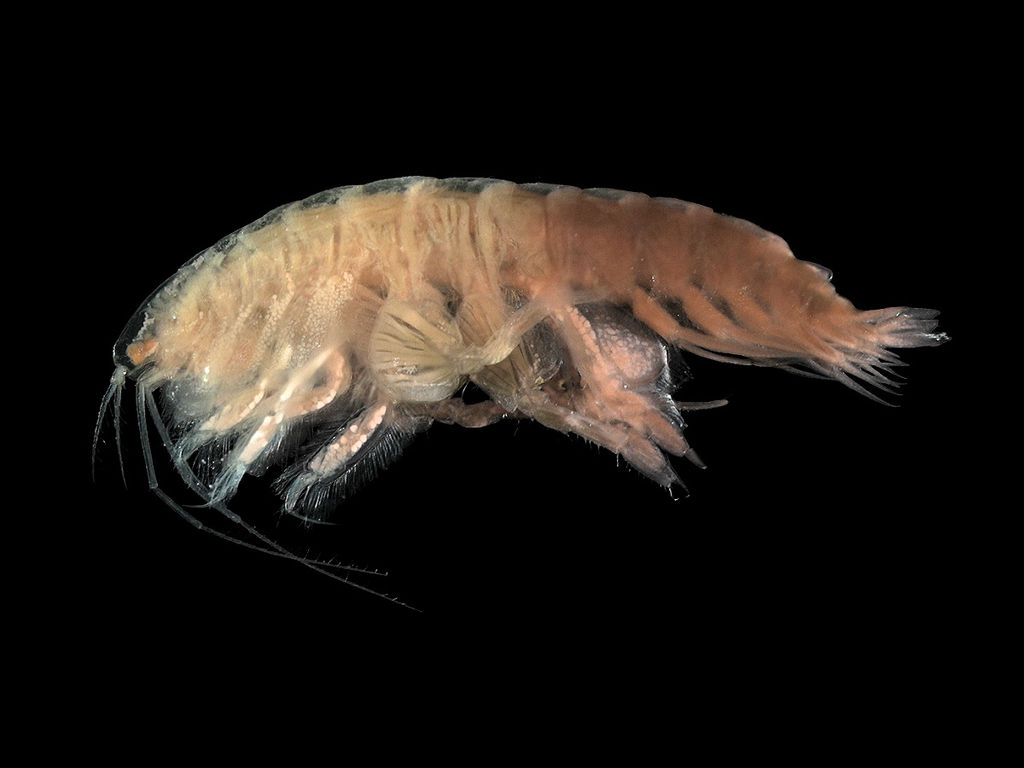
Ice-Loving Crustaceans Ride Arctic Conveyer Belt

Flea-like crustaceans that rely on Arctic ice may be using deep ocean currents as a sort of conveyer belt to bring them back to the pack after their ice has drifted out to sea, new research suggests.
If it is indeed how the tiny crustaceans keep from going too far out to sea, it is a clever transportation method that could become their way to survive ice-free Arctic summers as the globe heats up.
"Our findings may ultimately change the perception of ice fauna as a biota imminently threatened by the predicted disappearance of perennial sea ice," the researchers wrote today (Sept. 11) in the journal Biology Letters.
Losing ice
Arctic summers are becoming less icy as the climate changes. This summer set an all-time record for least Arctic sea-ice cover, with only 1.58 million square miles (4.10 million square kilometers) left in late August. Researchers don't know yet when summer ice will disappear entirely. Estimates range from within this decade to within perhaps 30 years. [10 Things to Know About Arctic Ice]
Megafauna such as polar bears and walruses depend on sea ice to survive, but so do less visible animals. Amphipods, tiny crustaceans that look like a cross between shrimp and fleas, are one example. Ice-dependent amphipods spend their lives clinging to the underside of sea ice, chomping on algae that grow there.
Norwegian marine biologist Jørgen Berge of the University Centre in Svalbard and his colleagues collected the most abundant of these ice-loving amphipods, a dark-eyed, transparent species called Apherusa glacialis, in plankton nets in January. They found the shrimp-like crustaceans at depths between about 650 and 6,500 feet (200 to 2,000 meters). About half of the haul was made up of egg-bearing females ― an unusual find for researchers, who don't normally take samples of these winter-breeding species in January. (Few people brave Arctic winters even in the name of science.)
Get the world’s most fascinating discoveries delivered straight to your inbox.
Global warming adaptation?
The discovery of deep-dwelling A. glacialis prompted Berge and his colleagues to come up with a theory of how these creatures manage to stay on ice despite seasonal melting. As the sea ice moves out into the oceans, they suggest, the amphipods ride along. When they get far enough out, the crustaceans drop down to depth. Between 650 feet and about 3,000 feet (200 and 900 m) below the ocean surface, the amphipods find themselves caught up in currents that actually move toward shore instead of away. These currents could provide a passive way for the amphipods to float back to ice-covered climes.
The researchers calculate that the distance covered during a nine- to 10-month float on a chunk of sea ice could be made up in the opposite direction by riding a deep ocean current for two to three months. In this way, amphipods could survive ice-free summers and make it back in time for the winter ice to form, providing them with a new habitat and source of food.
These conclusions have "yet to be rigorously tested," the researchers warn. Nevertheless, they could explain how amphipods as a group survived the last period of ice-free summers about 8,000 years ago.
Much more work is needed to understand how amphipods will fare in a warming world, the researchers wrote. Nevertheless, the findings provide some hope.
"If our observations prove to be of a more general character, ice-associated fauna such as A. glacialis is less threatened by the predicted disappearance of Arctic summer sea ice than previously assumed," they wrote.
Follow Stephanie Pappas on Twitter @sipappas or LiveScience @livescience. We're also on Facebook & Google+.

Stephanie Pappas is a contributing writer for Live Science, covering topics ranging from geoscience to archaeology to the human brain and behavior. She was previously a senior writer for Live Science but is now a freelancer based in Denver, Colorado, and regularly contributes to Scientific American and The Monitor, the monthly magazine of the American Psychological Association. Stephanie received a bachelor's degree in psychology from the University of South Carolina and a graduate certificate in science communication from the University of California, Santa Cruz.
